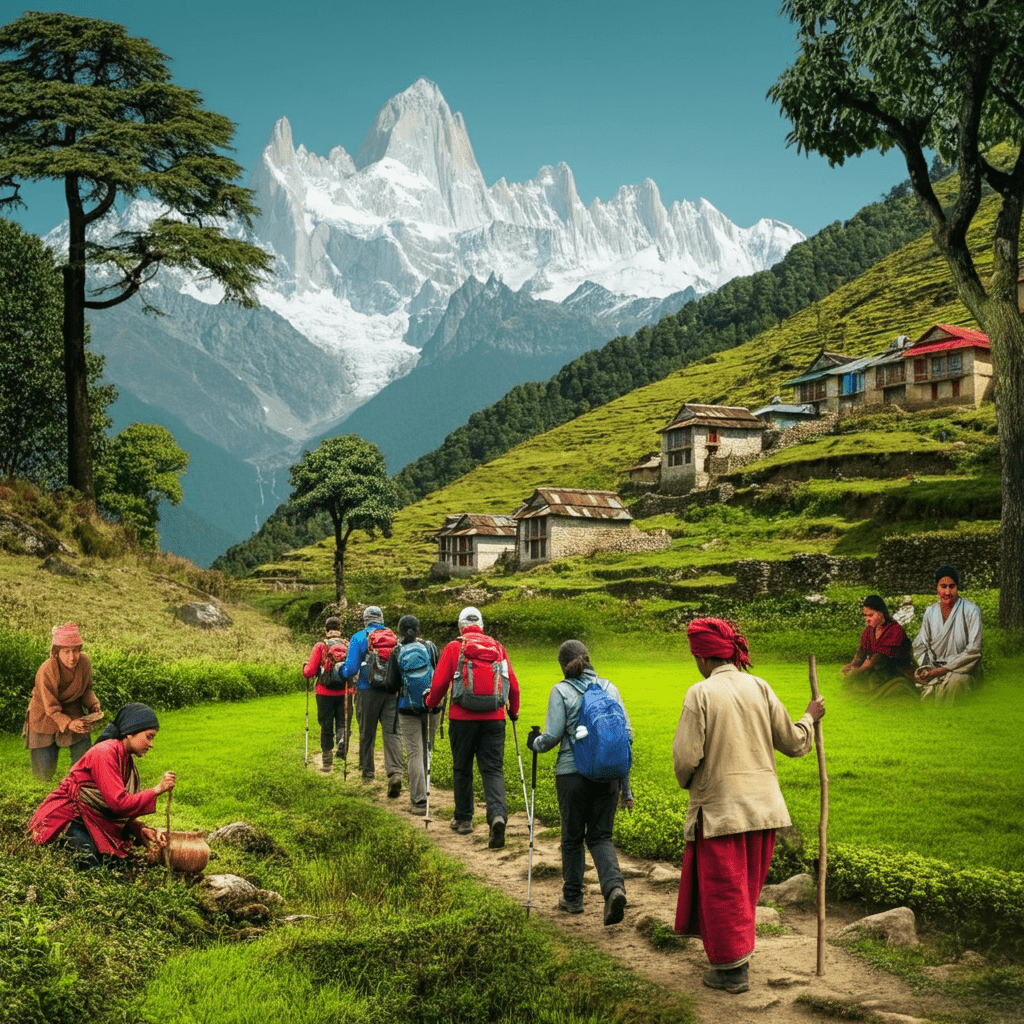India, a land of stunning biodiversity and diverse landscapes, is a paradise for adventurers and nature lovers. From the dense forests of the Western Ghats to the soaring peaks of the Himalayan range, the country’s trekking routes are as varied as its culture. However, as tourism continues to boom, it’s crucial to ensure that our curiosity doesn’t come at a cost to the planet. Eco-trekking, or sustainable trekking, is the perfect way to explore India’s natural beauty while preserving its delicate ecosystems.
This guide will walk you through the essentials of eco-trekking in India—what it is, why it matters, popular trails to try, and how to keep your adventures eco-friendly.
What is Eco-Trekking?
Eco-trekking goes beyond simply hiking in beautiful locations. It involves traveling responsibly to minimize your environmental impact while supporting local communities. Instead of merely exploring nature, you’re actively contributing to its protection. This idea ties seamlessly with sustainable tourism, focusing on preserving ecosystems for future generations while enjoying them today.

Why is Eco-Trekking Important?
-
Minimize Environmental Impact
Mass tourism often leaves behind a trail of pollutants and waste. Eco-trekking helps reduce that footprint by promoting zero-waste practices, avoiding single-use plastics, and designing routes that respect wildlife habitats.
-
Support Local Communities
Eco-trekking underscores the importance of contributing to the economy of local and indigenous communities. Staying in eco-lodges, hiring local guides, or buying local crafts adds a meaningful dimension to your travels.
-
Preserve Natural Beauty
From the pristine rivers of Arunachal Pradesh to the deserts of Rajasthan, many of India’s natural wonders are fragile. Eco-trekking helps raise awareness about the importance of their preservation.
Popular Eco-Trekking Trails in India
For those looking to explore nature responsibly, here are some eco-friendly trekking trails in India.
-
Valley of Flowers, Uttarakhand
Famous for its vibrant meadows filled with endemic flora, this UNESCO World Heritage Site is perfect for beginners and eco-trekkers. The trail focuses on preserving its rare plant species while introducing trekkers to the unique ecosystem of the Western Himalayas.
- What to Explore: Alpine flowers, Himalayan wildlife like snow leopards and musk deer.
- Eco-Friendly Tips: Carry biodegradable waste bags and stick to the marked trails to avoid trampling the flowers.
-
Dzongri Trek, Sikkim
This moderate trek offers awe-inspiring views of Kanchenjunga, the third-highest mountain in the world. Besides the breathtaking landscapes, trekkers can engage with local communities and learn about sustainable practices rooted in regional traditions.
- What to Explore: Traditional villages, high-altitude flora, and rhododendron forests.
- Eco-Friendly Tips: Respect local traditions and avoid using plastic bottles—bring a reusable water filter.
-
Kudremukh Trek, Karnataka
Located in the Western Ghats, this trek is a wonderland of grasslands and dense forests. The area is a designated biodiversity hotspot and home to species like the Malabar civet.
- What to Explore: Stunning views of rolling hills, streams, and a biodiversity haven.
- Eco-Friendly Tips: Avoid loud noises to not disturb wildlife and pick up any waste along the trail.
-
Roopkund Trek, Uttarakhand
Known for its “Skeleton Lake,” this high-altitude trek passes through lush greenery, alpine meadows, and snow-clad mountains. While the natural beauty is mesmerizing, trekkers are reminded to leave no trace to preserve the trail for others.
- What to Explore: Glacial lakes, folklore, and rugged landscapes.
- Eco-Friendly Tips: Leave the lake and its skeletons undisturbed out of respect for its history.
-
Arunachal Pradesh Talle Valley Trek
A true hidden gem, this trek takes you through dense forests, scenic meadows, and local villages. The untouched essence of this trail offers a firsthand glimpse into India’s raw natural beauty.
- What to Explore: Bamboo bridges, orchids, and unique tribal cultures.
- Eco-Friendly Tips: Avoid leaving behind non-biodegradable waste as the trail lacks urban disposal systems.
How to Trek Responsibly
Pack Eco-Friendly Gear
Invest in reusable water bottles, metal straws, and biodegradable soap to minimize waste. Avoid items like plastic bags, which can harm ecosystems.
Leave No Waste
Follow the golden rule of eco-trekking—leave no trace behind. Carry your trash with you and dispose of it properly only in designated areas. Pro tip? Divide waste into biodegradable and non-biodegradable categories.
Stick to Designated Trails
Straying from marked trails may damage vegetation or disturb local fauna. Stick to the designated paths to ensure minimal impact on the environment.
Support Local Businesses
Stay in local accommodations, hire certified local guides, and purchase handcrafted souvenirs. This ensures your money goes directly to the communities that sustain these trekking havens.
Respect Wildlife
Maintain a safe distance from animals and avoid feeding them. Even seemingly harmless snacks can interfere with their natural diets.
Conserve Resources
Limit water usage, especially in areas with limited access. Use renewable energy equipment, like solar-charged lights, whenever possible.
Benefits of Choosing Eco-Trekking Adventures
Besides helping the environment, eco-trekking fosters a deeper connection to the natural world. It enriches your travel experience by teaching you about sustainability and cultural preservation. Here’s what eco-trekking can do for you:
- Personal Growth: Immersion in nature can recharge your mental health and resilience.
- Skills Development: Learn survival tips, nature conservation strategies, and more from local guides.
- Community Connection: Form meaningful relationships with locals and like-minded adventurers.
Final Thoughts
Eco-trekking is more than just a trend; it’s an ethical approach to adventure that safeguards the future of our planet. Responsible exploration helps travelers immerse themselves in nature while leaving it unspoiled for generations to come.
India’s trails offer some of the world’s most stunning landscapes and biodiversity. By choosing eco-trekking practices, you’re not only enjoying these gifts but also contributing to their preservation.
Are you ready to take a step toward responsible travel? Choose one of the trails above, or share your favorite eco-trekking spots in the comments. Happy (eco-friendly) trekking!






